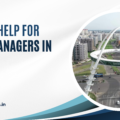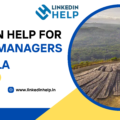Linkedin help for Architects
Architects: masters of space, creators of form, and, in the digital age, masters of their online presence. In a world driven by connections, LinkedIn shines as the platform where your portfolio meets potential clients, collaborators, and dream projects. But navigating this professional jungle as an architect can be tricky. Fear not, creative geniuses, for LinkedInHelp is here with your architect-specific tips to conquer the LinkedIn world:
1. Profile Perfection: Your Architectural Masterpiece:
- Headline: Don’t just state, inspire. Instead of “Architect,” go for “Designing Sustainable Futures” or “Crafting Spaces that Breathe Life.” Keywords matter, so sprinkle in terms like “sustainable design,” “biophilic architecture,” or “urban revitalization” to attract the right eyes.
- Summary: Show, don’t tell. Ditch the generic bio. Showcase your signature style with high-quality images of your most groundbreaking projects. Quantify your impact: reduced energy consumption with your green design? Increased footfall with your urban planning project? Show the world your magic.
- Keywords: Build your digital foundation. Include industry-relevant keywords throughout your profile. This makes you discoverable by potential clients, design firms, and competition judges.
2. Network Like a Master Builder:
- Follow the Design Elite: Connect with industry leaders, architecture firms, and design publications. Join relevant LinkedIn Groups like “Architects Network” or “Sustainable Design Professionals.”
- Engage in the Conversation: Share your design philosophy, insights on current architectural trends, or even your thoughts on the future of cities. Tag relevant stakeholders and participate in discussions to build meaningful connections.
- From Sketchpad to Coffee Shop: Use your online network as a springboard for real-world interactions. Attend architecture conferences, design exhibitions, and local networking events to connect face-to-face and build lasting relationships.
3. Content is King (and Queen) of the Algorithm:
- Share Your Architectural Vision: Don’t just post project pitches. Write articles on the challenges of designing for climate change, the importance of community-driven architecture, or the future of building materials. Become a thought leader and establish yourself as an expert.
- Beyond the Blueprint: Showcase your diverse interests. Share your passion for photography, environmental activism, or even urban sketching. This humanizes your profile and attracts like-minded connections.
- Visuals: Paint a 1,000-Word Story: Images speak volumes in the architectural world. Use stunning photos, 3D renders, and even timelapse videos of your projects to grab attention and showcase your creative genius.
Bonus Tip: Consistency is key. Be patient, engage regularly, and build meaningful connections. Celebrate your design awards, share your work-in-progress sketches, and show the world the passion that fuels your architectural journey.
With LinkedInHelp’s tips and your creative vision, your LinkedIn profile will be a masterpiece of digital architecture. Now, go forth and conquer the online world, while still building structures that inspire and amaze.
#LinkedInHelp #ArchitectLife #NetworkingTips #ContentMarketing #BuildYourBrand

LinkedIn for master’s degree students is a platform to build their professional network and enhance their career prospects. Here’s a guide tailored to help master’s students optimize their LinkedIn profiles:
Profile Picture:
Use a clear and professional photo where you are dressed appropriately. A simple headshot with a neutral background works well.
Headline:
Craft a concise and informative headline that reflects your master’s program, specialization, and career interests. For example, “Master’s in Marketing | Aspiring Digital Marketer.”
Summary:
Write a well-written summary that highlights your masters degree or entire educational background, key skills, and career goals. Mention your master’s program, academic achievements, masters internship, projects undertaken and any relevant experiences.
Education:
List your master’s degree program curriculum and electives, the university or institution branding, field of study, and anticipated graduation date. Highlight any relevant coursework or projects.
Skills:
Showcase skills gained during your master’s program, such as data analysis, project management, software proficiency, and soft skills like communication and teamwork.
Projects and Research:
Describe any significant projects, research, or theses you’ve undertaken during your master’s program. Highlight your role, methodologies, and outcomes.
Internships and Work Experience:
If applicable, include internships or part-time jobs related to your field. Describe your responsibilities and accomplishments to showcase your practical experience.
Networking:
Connect with classmates, professors, alumni, and professionals in your field. Personalize connection requests with a brief introduction.
Engagement:
Engage with industry-related content by commenting, sharing, and writing posts. This demonstrates your interest and knowledge in your field.
Recommendations:
Request recommendations from professors, project supervisors, or internship mentors. Their endorsements add credibility to your profile.
Career Interests:
Specify your career aspirations, whether it’s entering a specific industry, pursuing further education, or a particular job role.
Volunteer and Extracurricular Activities:
Highlight any volunteer work, clubs, or organizations you’ve been involved with during your master’s program. This showcases your interests and leadership skills.
Certifications and Courses:
If you’ve taken relevant online courses or obtained certifications, list them to showcase your additional skills and knowledge.
Custom URL:
Personalize your LinkedIn URL to make it look cleaner and more professional.
Privacy Settings:
Adjust privacy settings to balance visibility with your comfort level. Make sure your contact information is visible for networking purposes.
Consistency:
Regularly update your profile with new achievements, experiences, or skills gained during your master’s program.
Industry Follows:
Follow companies, organizations, and influencers in your industry to stay updated on trends and job opportunities.
Learning Opportunities:
Participate in LinkedIn Learning courses, webinars, and workshops to enhance your skills and knowledge.
Remember, your LinkedIn profile is a dynamic reflection of your academic journey and career aspirations. Regularly engage, network, and update your profile to make the most of your master’s degree experience.
CONNECT one to one with Linkedin experts +91.9830780089
#masters #mastersdegree #students #LinkedIn #Linkedinwriting #Linkedinprofile





